Air UK was an independent regional airline formed in 1980 from the merger of two UK-based regional airlines: British Island Airways and Air Anglia.
At the time of the merger on 1 January 1980, Air UK was Britain’s third largest airline with a fleet of forty aircraft consisting of four BAC 1-11 400s, two Fokker F28 Fellowship 4000s, ten Fokker F27 Fellowship 100/200s, eighteen Handley Page Dart Heralds and six Embraer EMB-110 Bandeirantes. Air UK carried more than one million passengers annually, mostly on scheduled flights, using all aircraft apart from the BAC 1-11s, which were predominantly operated on charter flights. Air UK’s initial scheduled network served thirty-three locations in the UK, Ireland, Netherlands, Channel Islands, Isle of Man, Germany, Switzerland, France, Belgium and Norway.

Fokker F27-500 Friendship, G-BCDN at Paris CDG, July 1987 (christian hanuise, distributed under a GFDL 1.2 Licence)
The recession of the early 1980s led to a reduction in the fleet and route network. Seven Heralds and three Bandeirantes were withdrawn from service and the two F28 4000s were leased to Air Alsace. The route network was cut, leaving only the links between 20 locations in the British Isles and six in Europe. Continuing financial problems caused Peter Villa, the first managing director of Air UK, to initiate a management buy-out of Air UK’s charter business in 1982. This resulted in Villa reforming British Island Airways as a charter operator, acquiring four 1-11’s from Air UK as part of the transaction.
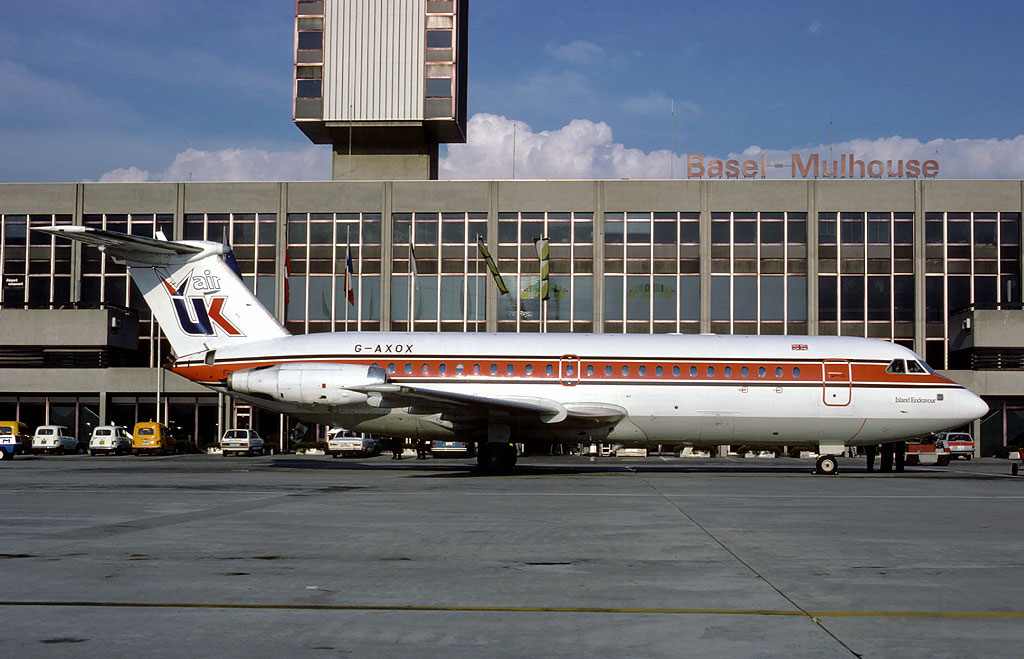
BAC 1-11 400, G-AXOX at Basel, September 1980 (Eduard Marmet, distributed under CC BY-SA 3.0 Licence)
As Air UK began to stabilise financially, five Shorts 330/360s were acquired together with more Fokker F27s, including the longer -500 series. The Dutch airline, KLM, which had been associated with Air Anglia – a source of some tensions during the early stages of Air UK – acquired a 14.9% share in Air UK in 1987. In the same year Air UK placed its first order for the BAe 146; it subsequently operated up to twenty of the type including the -100, -200 and -300 variants. Therefore, in 1987, Air UK was doing well, gaining from British Airways’ take-over of British Caledonian with new routes from Gatwick to Glasgow and Edinburgh.

Embraer EMB-110 Bandeirante at London Southend Airport (Eduard Marmet, distributed under a CC BY-SA 3.0 Licence)

Boeing 737-200, G-BMOR of Air UK Leisure (Pedro Aragão, distributed under a CC BY-SA 3.0 Licence)
Air UK Leisure was launched as a new charter subsidiary of Air UK in 1988, in association with the charter brokerage company, Viking International. It began flying European charters out of Stansted using a fleet of three Boeing 737-200s, which were replaced by seven new 737-400s from October 1988. Air UK Leisure moved into the long-haul market in May 1993, under an associated brand name, Leisure International, flying two Boeing 767-300ERs to Florida and the Caribbean on behalf of tour operator Unijet (formerly Viking International). Unijet assumed total control of Air UK Leisure and Leisure International in 1996, and retained the name Leisure International Airways. Unijet was bought by travel agent and tour operator First Choice Holidays in 1998 and Leisure International became part of Air 2000.
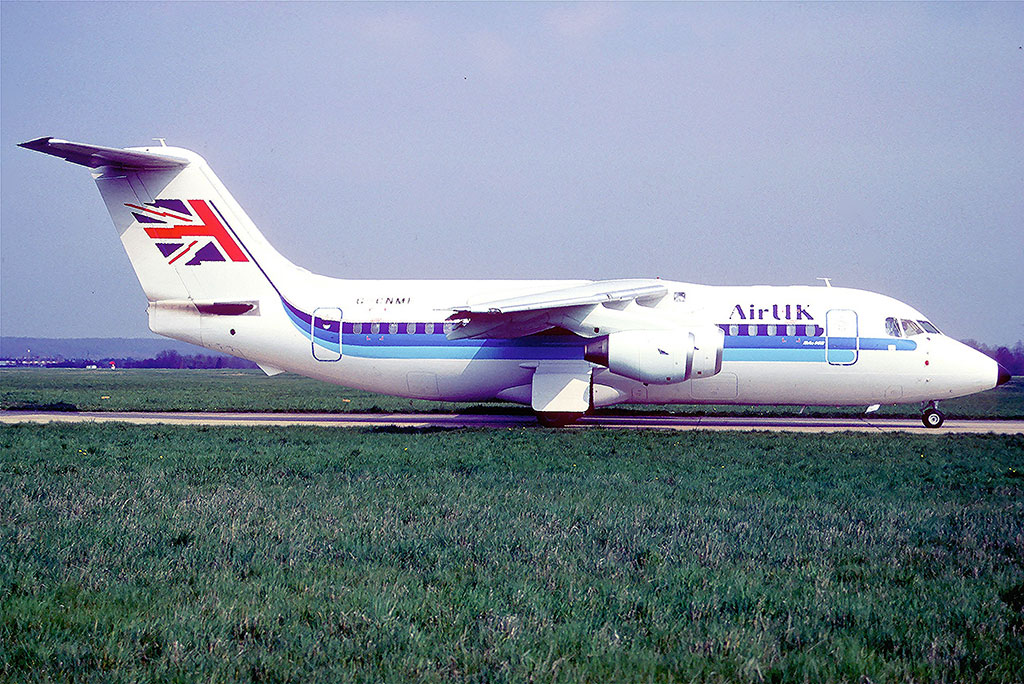
BAe 146-200 G-CNMF, the first BAE 146 to be acquired by Air UK (Aero Icarus, distributed under a CC BY-SA 2.0 Licence)
By 1991, Air UK was based at Stansted Airport and had developed a comprehensive network of short-haul domestic and European routes connecting twenty-three airports, including Bergen, Brussels, Paris, Dusseldorf, Frankfurt, Hamburg, Madrid, Milan, Munich and Zurich. It intended the routes to be feeders for connecting to the long-haul carriers which were expected to begin operating from Stansted due to the lack of available slots at Heathrow and Gatwick. However, the recession of the early 1990s, resulting from the first Gulf War, led to a major contraction of both business and leisure travel, with a significant reduction in routes and schedules at both of London’s main airports. In addition, the collapse of Air Europe (user of 20% of Gatwick’s slots) contributed to the easing of congestion at Gatwick. None of the major long-haul airlines showed any interest in moving or starting operations at Stansted, which made it very challenging for Air UK to ensure that its Stansted operations remained viable.
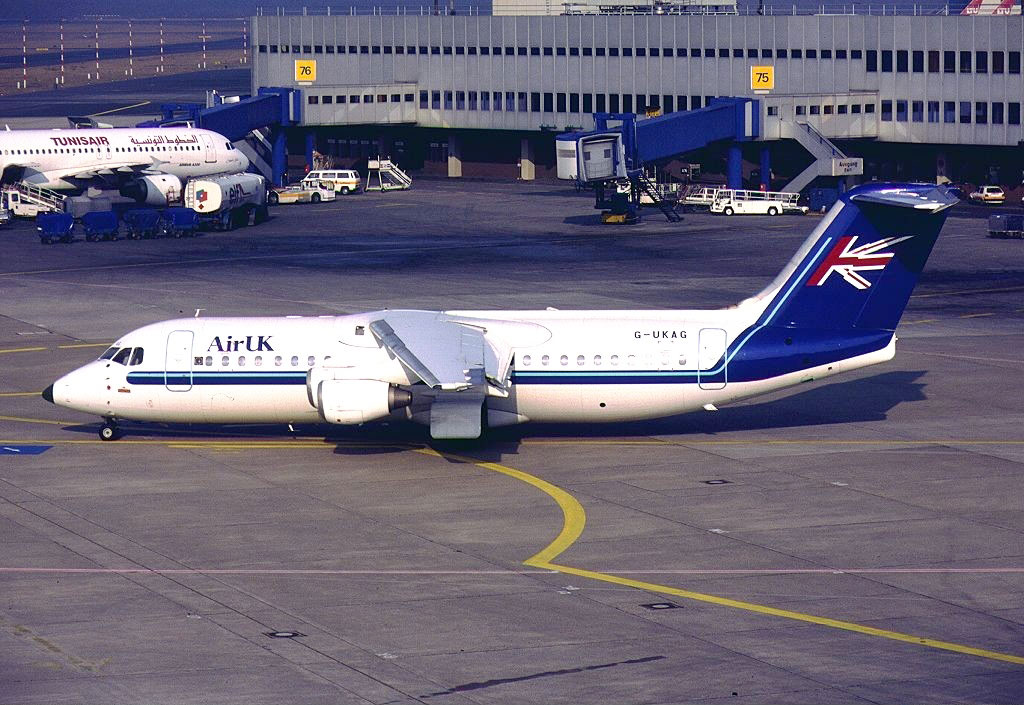
BAe 146-300, G-UKAG at Dusseldorf (Konstantin von Wedelstaedt, distributed under a GFDL 1.2 Licence)
Despite these difficulties, Air UK continued with the renewal of it aircraft fleet. New Fokker 100 aircraft arrived in 1992 and the smaller Fokker F27s (-100/200/400/600 Series) were replaced by more F27-500s. By 1997 a fleet of nine Fokker 50s had been acquired as the F27-500s and BAe 146-100 and -200s were being withdrawn from service.

BAe 146-300, G-UKRC operated by Buzz in June 2002 (Ken Fielding, distributed under a CC BY-SA 3.0 Licence)

Fokker 50 G-UKTI at Amsterdam Schiphol Airport. (Paul Spijkers, distributed under a GFDL Licence)
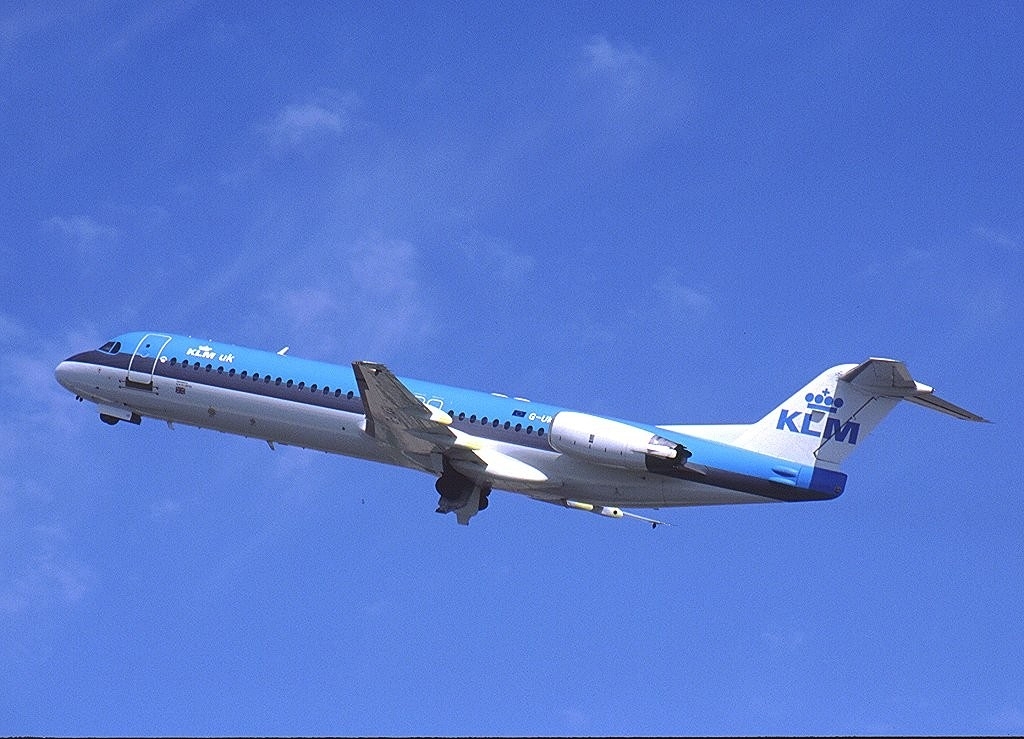
Fokker 100 G-UKFN operating for KLM uk (Konstantin von Wedelstaedt, distributed under a GFDL 1.2 Licence)
In 1997, KLM became the sole owner of Air UK, officially changing the name to KLM uk in April 1998. The rebranded airline launched new routes from London City Airport to Amsterdam, Edinburgh and Glasgow. However, the carrier’s Stansted operations faced competition from low-cost airlines such as Ryanair, easyJet and Go. In January 2000, a number of KLM uk’s routes which were not linked to Amsterdam were transferred to the KLM Group’s new low-cost subsidiary, Buzz, and were operated by the former Air UK’s remaining BAe 146-300s which had also been moved to Buzz. In 2001 Buzz operated fourteen routes from Stansted, using the BAe146s and two Boeing 737-300s that had also been acquired. Scheduled routes not transferred to Buzz and serving destinations other than Amsterdam were eventually closed down, leaving KLM uk with only fifteen routes linking regional UK airports to Amsterdam Schiphol Airport. KLM uk was subsumed into KLM’s regional subsidiary KLM Cityhopper in 2002 and the following year Buzz was sold to Ryanair.
 Lost Airline Colours of Europe
Lost Airline Colours of Europe
This full colour book includes hundreds of pictures of Europe’s lost airlines and old airline liveries. Includes many pictures of classic airliners.
Order Your Copy

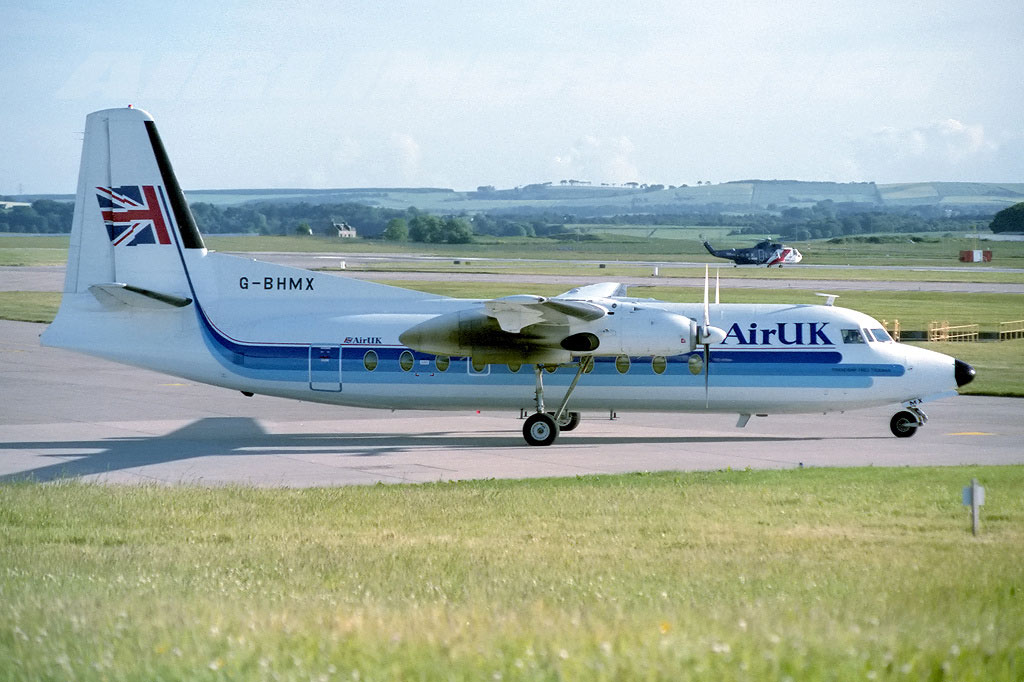
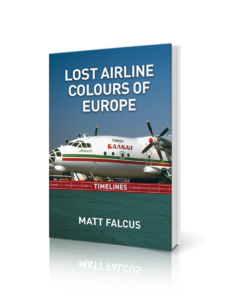



1 comment
Air UK was a well respected airline in the Channel Islands, many years after it’s demise it is still sadly missed.